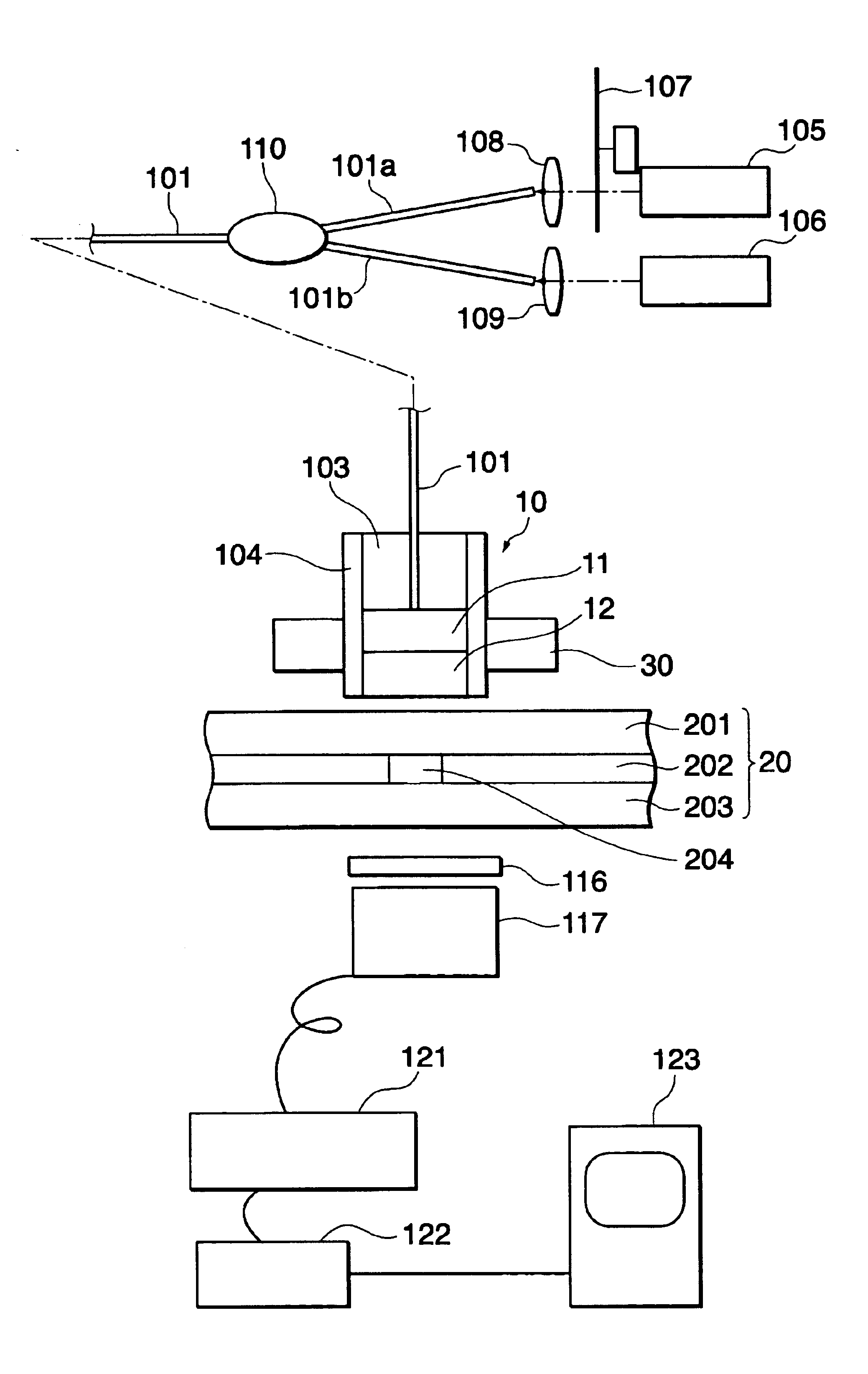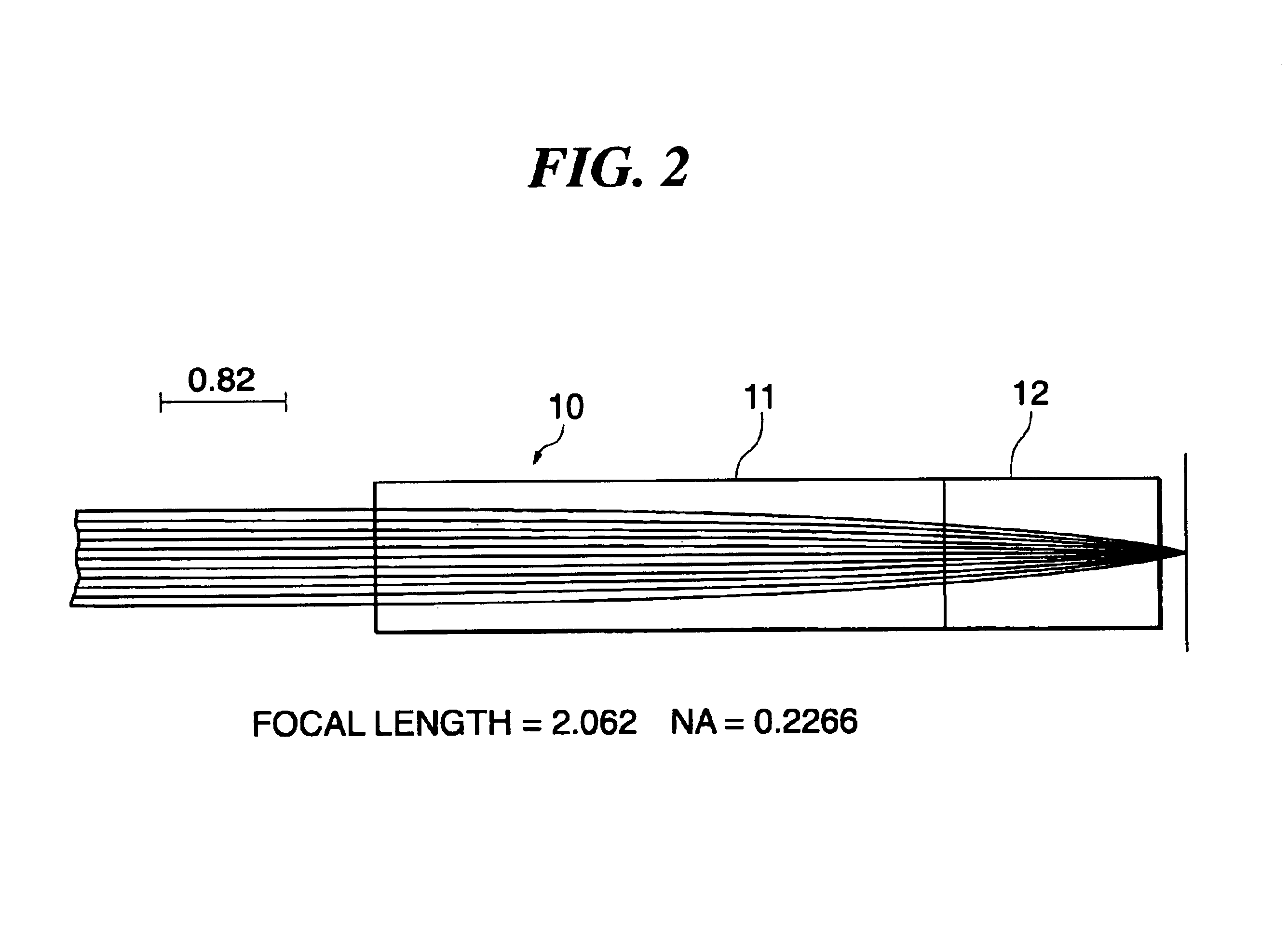Gradient index rod lens unit and microchemical system having the same
a technology of microchemical systems and index rods, applied in the field of graded index rod lens units and microchemical systems having the same, can solve the problems of the limitation of the type of ions (glass components) that can be used, and the inability to obtain the desired value of chromatic aberration
- Summary
- Abstract
- Description
- Claims
- Application Information
AI Technical Summary
Benefits of technology
Problems solved by technology
Method used
Image
Examples
first embodiment
[0040]FIG. 1 is a schematic view showing the constitution of a microchemical system with a gradient index rod lens unit according to the present invention.
[0041]In FIG. 1, the gradient index rod lens unit 10 is comprised of two gradient index rod lenses 11 and 12 which have respective different chromatic aberrations. The gradient index rod lens 11 has a smaller chromatic aberration, and the gradient index rod lens 12 has a larger chromatic aberration. The gradient index rod lens 12 is different in the type of ions (glass component) from the gradient index rod lens 11 and thus has the larger chromatic aberration. The gradient index rod lenses 11 and 12 have end faces thereof bonded together by an organic adhesive agent or the like.
[0042]The gradient index rod lens unit 10 is mounted on a tip of an optical fiber 101 that transmits exciting light and detecting light in the single mode. The tip of the optical fiber 101 is mounted in a ferrule 103 that makes the outer diameter of the opt...
second embodiment
[0066]FIG. 4 is a schematic view showing the constitution of a microchemical system with a gradient index rod lens unit according to the present invention. In the figure, component elements corresponding to those in the microchemical system of FIG. 1 are designated by identical reference numerals, description of which is omitted.
[0067]In FIG. 4, the microchemical system according to the present embodiment is not provided with the optical fiber for guiding the exciting light and the detecting light, and instead, the exciting light and the detecting light are guided as space light to the gradient index rod lens unit 10. The exciting light output from the exciting light source 105 and the detecting light output from the detecting light source 106 are coaxially aligned with each other by a dichroic mirror 111. The coaxially aligned exciting light and detecting light are directed toward the gradient index rod lens unit 10. At this time, the optical path of the exciting light and the dete...
PUM
| Property | Measurement | Unit |
|---|---|---|
| diameter | aaaaa | aaaaa |
| aperture diameter | aaaaa | aaaaa |
| aperture diameter | aaaaa | aaaaa |
Abstract
Description
Claims
Application Information
 Login to View More
Login to View More - R&D
- Intellectual Property
- Life Sciences
- Materials
- Tech Scout
- Unparalleled Data Quality
- Higher Quality Content
- 60% Fewer Hallucinations
Browse by: Latest US Patents, China's latest patents, Technical Efficacy Thesaurus, Application Domain, Technology Topic, Popular Technical Reports.
© 2025 PatSnap. All rights reserved.Legal|Privacy policy|Modern Slavery Act Transparency Statement|Sitemap|About US| Contact US: help@patsnap.com



